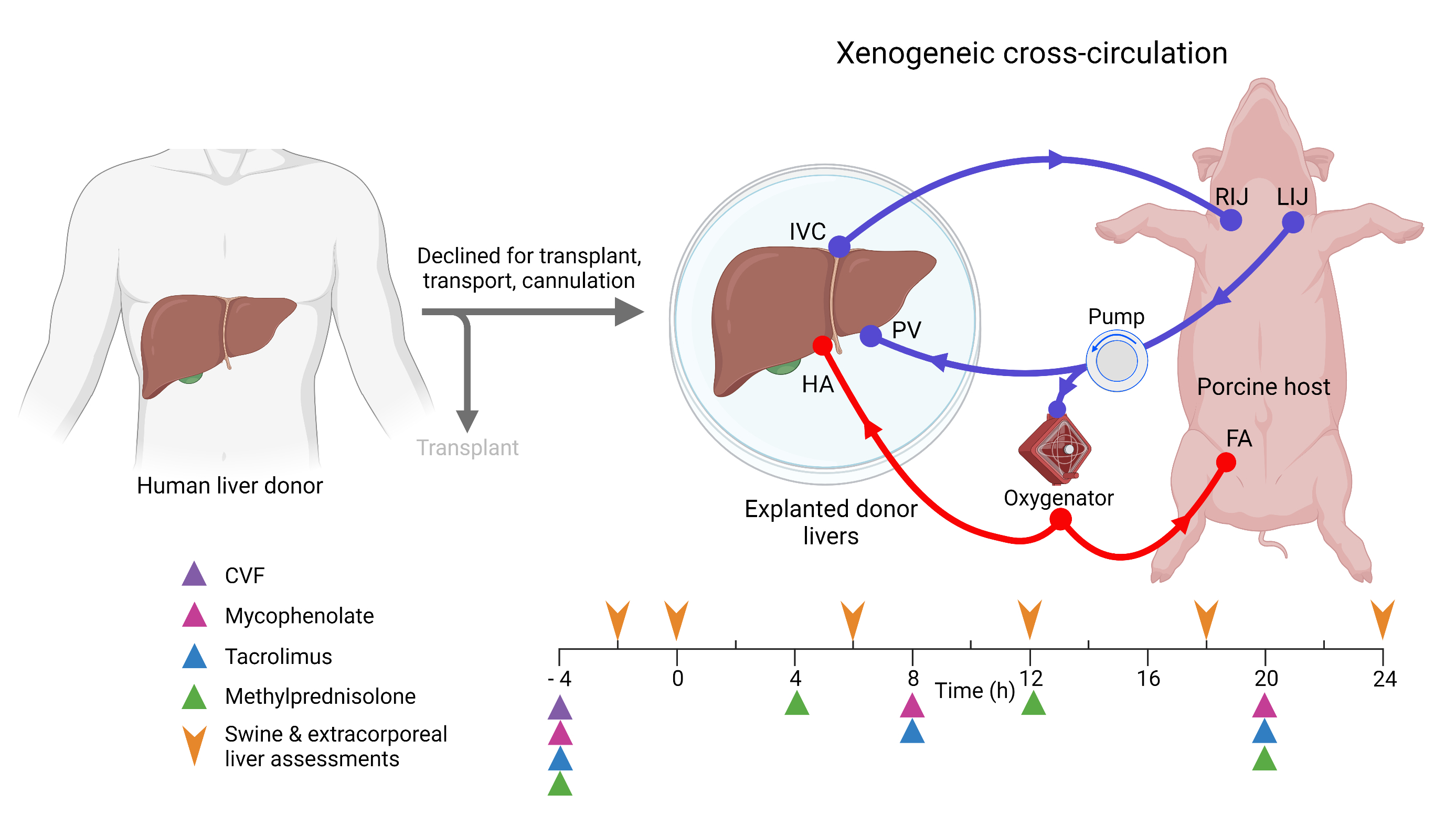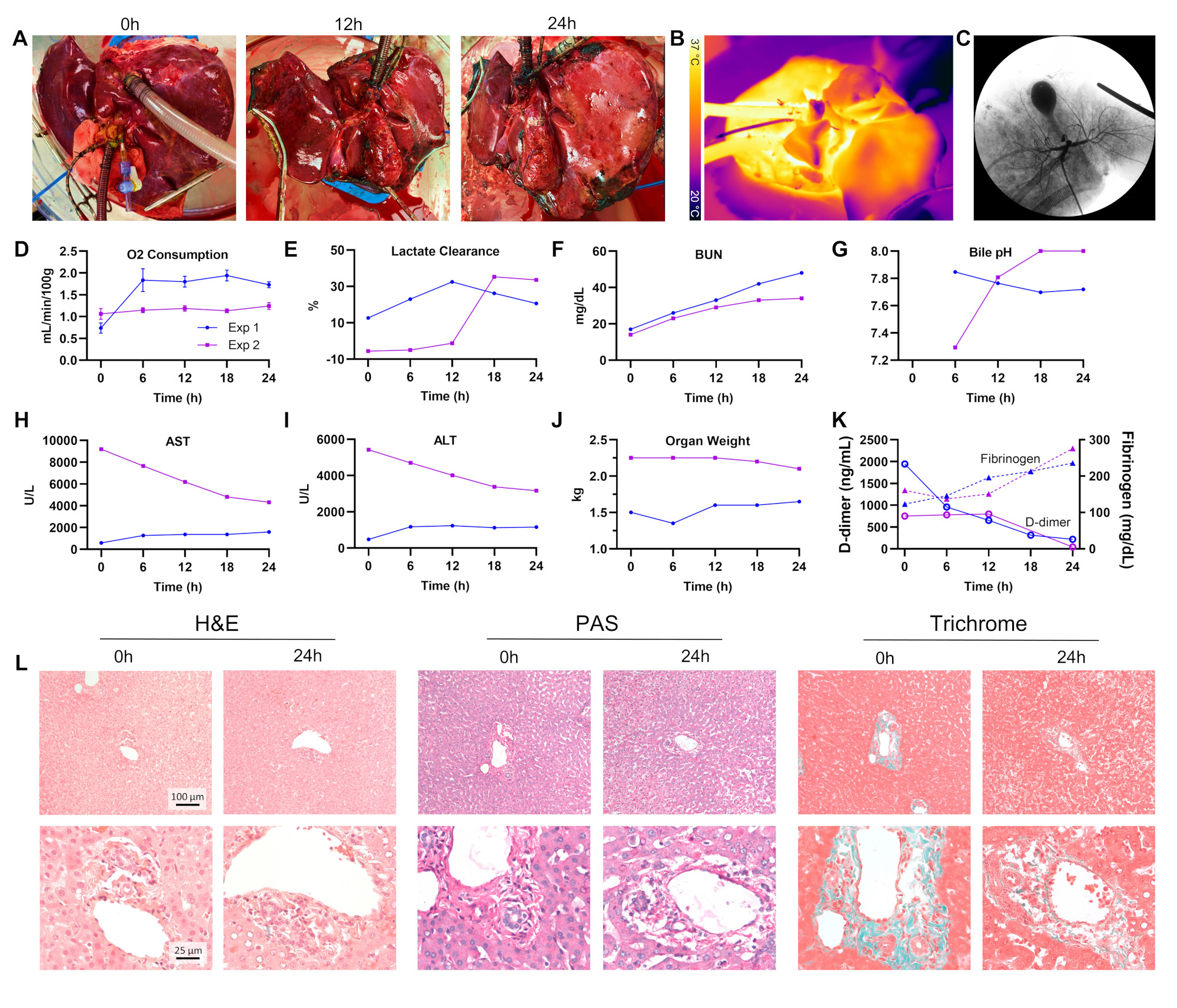Xenogeneic Cross-Circulation Supports Ex Vivo Human Livers for 24 Hours
1Hepatobiliary Surgery and Liver Transplantation
Thoracic Surgery, Vanderbilt University Medical Center, Nashville, TN, 2Thoracic Surgery, Vanderbilt University Medical Center, Nashville, TN, 3Hepatobiliary Surgery and Liver Transplantation, Vanderbilt University Medical Center, Nashville, TN
Meeting: 2022 American Transplant Congress
Abstract number: 938
Keywords: Liver, Pig, Preservation, Xenoreactive antibodies
Topic: Basic Science » Basic Science » 15 - Machine Perfusion and Organ Rehabililtation - Basic
Session Information
Session Name: Machine Perfusion and Organ Rehabilitation - Basic
Session Type: Poster Abstract
Date: Sunday, June 5, 2022
Session Time: 7:00pm-8:00pm
 Presentation Time: 7:00pm-8:00pm
Presentation Time: 7:00pm-8:00pm
Location: Hynes Halls C & D
*Purpose: Despite increasing use of machine perfusion as an organ preservation and rescue technique in liver transplantation, significant organ shortages and waitlist mortality highlight a continuing need for improved organ recovery methods. We have previously described a platform for ex vivo support of explanted porcine livers using cross-circulation. Here, we describe the use of xenogeneic cross-circulation (XCC) for the support of explanted human livers for 24 hours.
*Methods: Human donor livers (n = 2) declined for clinical transplantation were procured and placed on normothermic, veno-arteriovenous XCC with anesthetized, immunosuppressed, complement depleted porcine hosts (Fig. 1). Longitudinal analyses of extracorporeal livers and porcine hosts were performed over 24 hours of XCC.
*Results: Throughout 24 hours of support, extracorporeal livers maintained gross architecture, normothermic perfusion, and biliary integrity (Fig. 2A-C). Functionally, the liver demonstrated stable or improved oxygen consumption, lactate clearance, protein metabolism, and alkaline bile composition (Fig. 2D-G). Liver enzymes increased upon reperfusion, but decreased or remained stable throughout cross-circulation (Fig. 2H, I). Organ weight remained stable and fibrinolytic markers improved over the course of support (Fig. 2J-K). There was no major histologic evidence of hepatocellular injury (Fig. 2L). Circuit parameters remained physiologic during XCC (hepatic artery flow 233 ± 55 mL/min; hepatic artery pressure 89 ± 45 mmHg; portal venous flow 510 ± 120 mL/min; portal venous pressure 10 ± 3 mmHg; portal venous O2 saturation 64 ± 15%).
*Conclusions: We demonstrate that XCC enables the physiologic support of explanted human livers for 24 hours. XCC has potential application as a translational research platform and clinical biotechnology for organ salvage and recovery.
To cite this abstract in AMA style:
Wu WK, Ukita R, Patel YJ, Ziogas IA, Cortelli M, Mentz M, Talackine JR, Francois SA, Cardwell NL, Stokes JW, Alexopoulos SP, Bacchetta M. Xenogeneic Cross-Circulation Supports Ex Vivo Human Livers for 24 Hours [abstract]. Am J Transplant. 2022; 22 (suppl 3). https://atcmeetingabstracts.com/abstract/xenogeneic-cross-circulation-supports-ex-vivo-human-livers-for-24-hours/. Accessed December 16, 2025.« Back to 2022 American Transplant Congress


